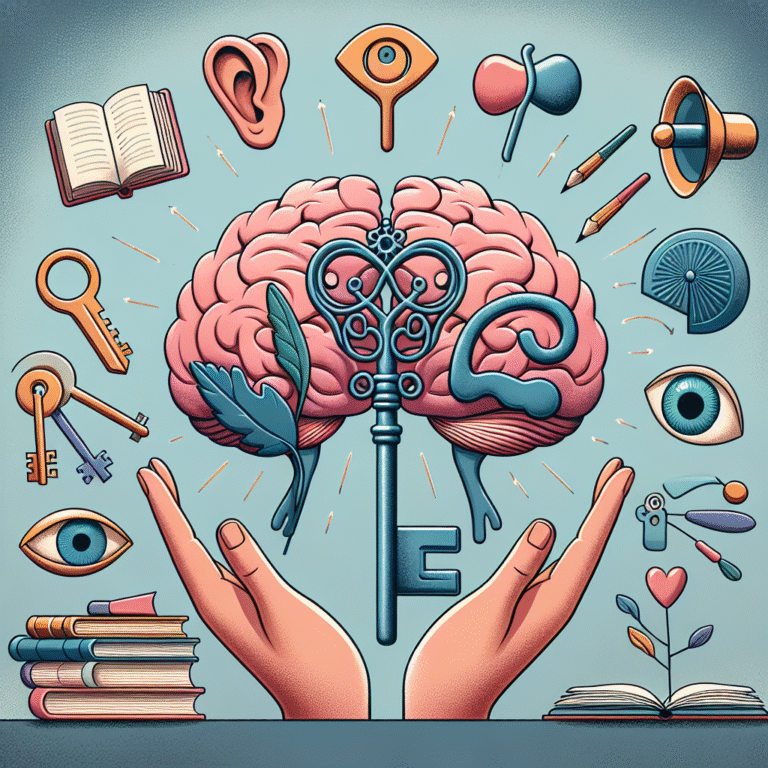
Reclaiming Life: How the Best PTSD Therapies Encourage Healing
Introduction
Imagine waking up each day filled with anxiety, haunted by memories you wish you could forget. For millions dealing with Post-Traumatic Stress Disorder (PTSD), this is a reality. Yet, amidst the struggles, there is hope. Reclaiming Life: How the Best PTSD Therapies Encourage Healing illuminates the path towards recovery, offering insights into effective strategies that not only alleviate symptoms but also empower individuals to take back their lives. If you or a loved one is grappling with PTSD, the promising therapies highlighted in this article may be the key to unlocking a brighter future.
Understanding PTSD
What is PTSD?
Post-Traumatic Stress Disorder is a mental health condition triggered by experiencing or witnessing a traumatic event. Symptoms can manifest as flashbacks, nightmares, severe anxiety, and uncontrollable thoughts about the event. According to the American Psychiatric Association, PTSD affects approximately 7-8% of the population at some point in their lives.
The Importance of Reclaiming Life
Reclaiming Life: How the Best PTSD Therapies Encourage Healing emphasizes the significance of addressing not just the symptoms but the underlying issues that lead to PTSD. Healing isn’t solely about managing symptoms; it’s about empowering individuals to live fulfilling lives once again.
The Journey to Healing: Key Therapies
1. Cognitive Behavioral Therapy (CBT)
Cognitive Behavioral Therapy is one of the most researched and effective treatments for PTSD. It assists individuals in identifying and challenging negative thoughts associated with their trauma.
Case Study: Mike’s Journey with CBT
Mike, a veteran, found himself grappling with intrusive thoughts after returning from deployment. Through CBT, he learned to reframe his thoughts, turning his “I am broken” mentality into “I am learning to heal.” Mike’s transformation showcases how CBT can empower individuals to reclaim their lives through altered perceptions.
2. Eye Movement Desensitization and Reprocessing (EMDR)
EMDR utilizes guided eye movements to help individuals process traumatic memories. It reconnects the left and right brains, facilitating emotional healing.
Case Study: Sarah’s EMDR Experience
Sarah experienced a traumatic event in her early childhood. After years of struggling, she sought out EMDR therapy. Over several sessions, she reported a significant decrease in anxiety and an enhanced sense of control over her emotions. EMDR enabled Sarah to reclaim parts of her life that trauma had overshadowed, allowing her to pursue dreams she had shelved years ago.
3. Mindfulness and Meditation
Mindfulness practices help individuals become aware of their thoughts and feelings without judgment. This can be incredibly beneficial for those with PTSD, fostering a sense of calm and enabling emotional regulation.
Case Study: Jen’s Mindfulness Practice
After being diagnosed with PTSD, Jen began a daily mindfulness meditation practice. She noted improvements in her mood and a reduction in panic attacks. Mindfulness not only helped Jen combat her PTSD symptoms but allowed her to reconnect with herself, exemplifying the healing aspects of mindfulness in the context of reclaiming life.
4. Exposure Therapy
Exposure therapy involves gradual and repeated exposure to the trauma-related memories or cues, helping individuals confront their fears in a controlled environment.
Case Study: Rob’s Exposure Therapy
Rob’s traumatic experience left him unable to drive. Through exposure therapy, he gradually faced his fear by first visualizing driving, then sitting in a parked car, eventually taking short drives around his neighborhood. This step-by-step approach enabled Rob to reclaim the independence he once enjoyed and rebuild his confidence.
5. Medication Management
While not a standalone solution, medications such as SSRIs (Selective Serotonin Reuptake Inhibitors) can help alleviate PTSD symptoms, making other therapies more effective.
Case Study: Lisa’s Combined Approach
Lisa started on an SSRI to manage her PTSD symptoms and subsequently engaged in talk therapy. The combination allowed her to feel stable enough to address the trauma directly in therapy, leading her towards reclaiming her life.
Comparison of PTSD Therapies
| Therapy Type | Typical Duration | Pros | Cons |
|---|---|---|---|
| Cognitive Behavioral Therapy | 12-20 sessions | Effective, evidence-based | Time-consuming |
| EMDR | 6-12 sessions | Rapid results, non-verbal | May not be suitable for everyone |
| Mindfulness | Ongoing | Long-term benefits, accessible | Requires consistent practice |
| Exposure Therapy | Varies | Directly confront and reduce fears | May cause temporary discomfort |
| Medication Management | Ongoing | Reduces severe symptoms | Possible side effects |
Reclaiming Life: The Role of Support Systems
Importance of Community
In the healing journey, community support cannot be overstated. Engaging with support groups or having a solid support system can foster a sense of belonging and encouragement, essential for those on the path to reclaiming life.
Family Involvement
Family members should be educated about PTSD, as understanding and empathy are vital for recovery. By involving family in treatment, the healing process can be more holistic.
Activating Change: Steps to Reclaim Your Life
- Seek Professional Help: Don’t hesitate to contact a mental health expert who specializes in PTSD therapies.
- Educate Yourself: Knowledge about PTSD and its impact can prepare you for treatment.
- Practice Self-Care: Upgrade your lifestyle with healthy habits such as exercise, nutrition, and sleep hygiene.
- Establish a Support Network: Surround yourself with empathetic individuals who support your healing journey.
Conclusion
Reclaiming Life: How the Best PTSD Therapies Encourage Healing is not just a phrase; it is a reality for countless individuals taking deliberate steps toward healing. From Cognitive Behavioral Therapy to mindfulness practices, the journey is unique for everyone but invariably leads toward empowerment and fulfillment. Remember, healing is a process, not a destination. Each small step counts, paving the way for a future filled with hope and strength.
FAQs
1. What is PTSD?
PTSD, or Post-Traumatic Stress Disorder, is a mental health condition triggered by a traumatic event. Symptoms include intrusive thoughts, nightmares, and severe anxiety.
2. What are the symptoms of PTSD?
Common symptoms include flashbacks, heightened anxiety, difficulty sleeping, avoidance of reminders, and emotional numbness.
3. How long does therapy for PTSD typically last?
Therapy duration can vary greatly. Cognitive Behavioral Therapy may last 12-20 sessions, while mindfulness practices can be ongoing.
4. Can PTSD be cured?
While PTSD may not be "cured" in the traditional sense, many individuals experience significant relief from symptoms through various therapeutic approaches.
5. What role does medication play in PTSD treatment?
Medication can help alleviate severe symptoms, allowing individuals to engage more effectively in therapy, but it should generally be combined with other treatments for optimum results.
By understanding and utilizing the best PTSD therapies, we can reshape our narratives, encouraging not just recovery, but true reclamation of life.









